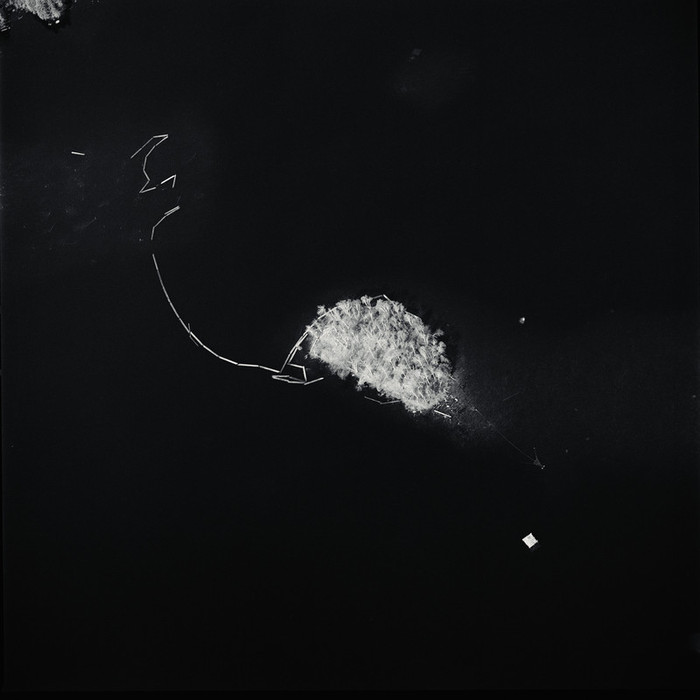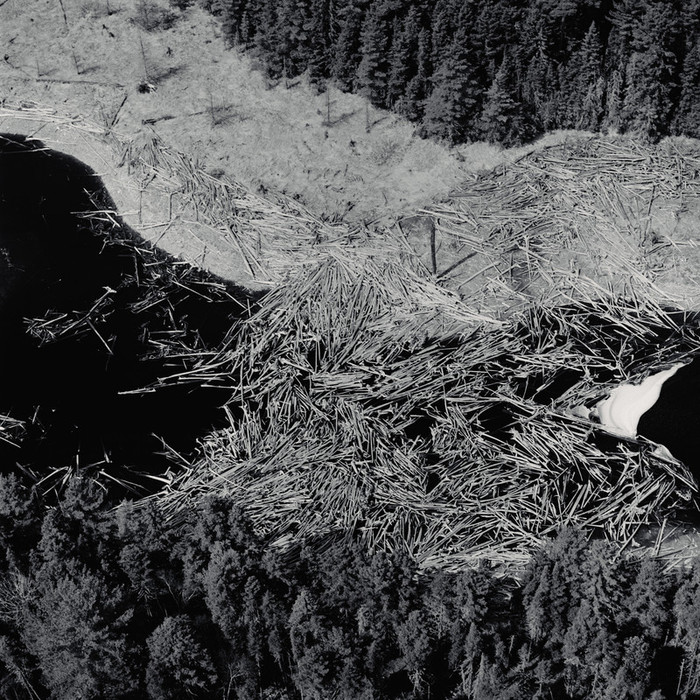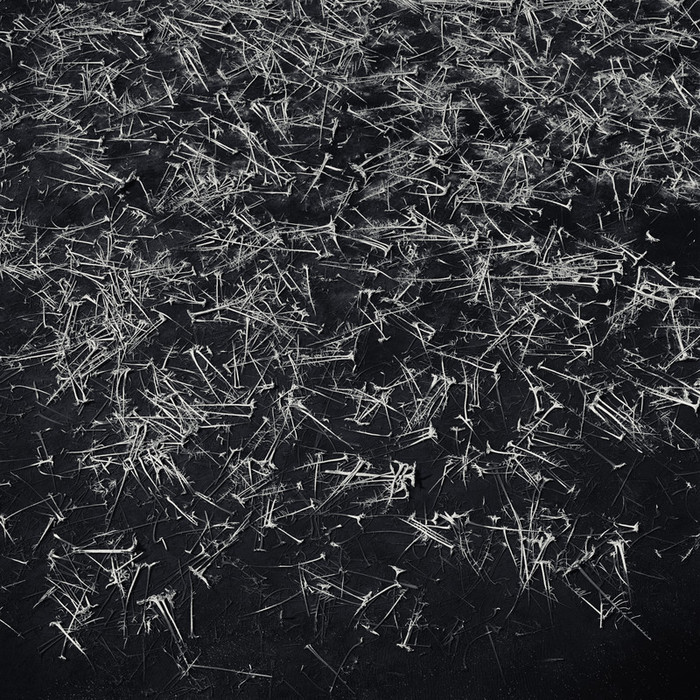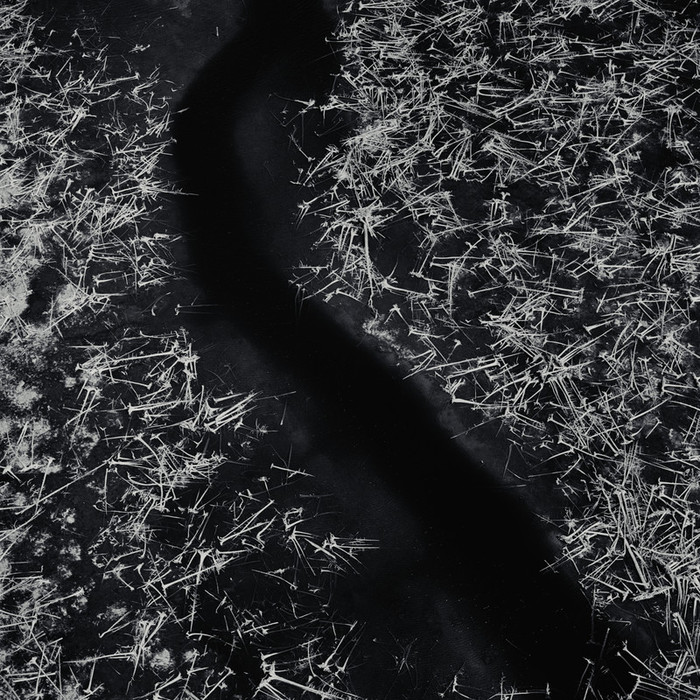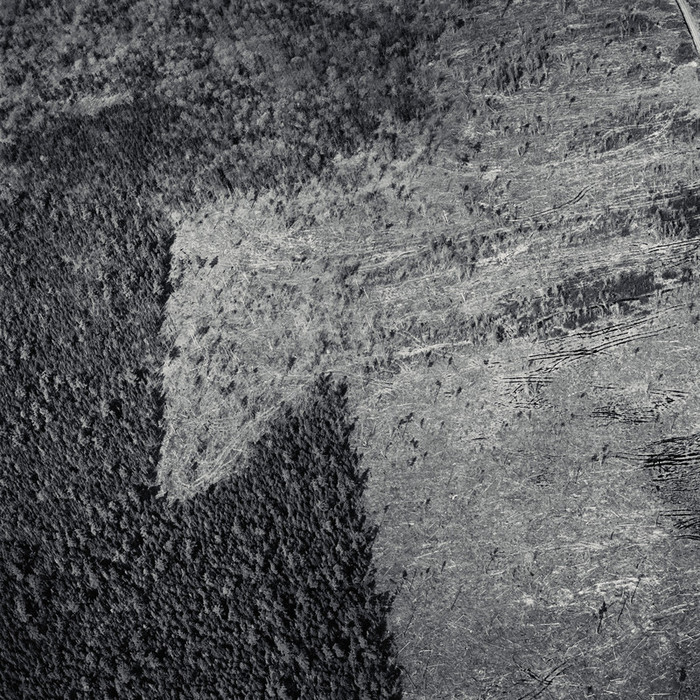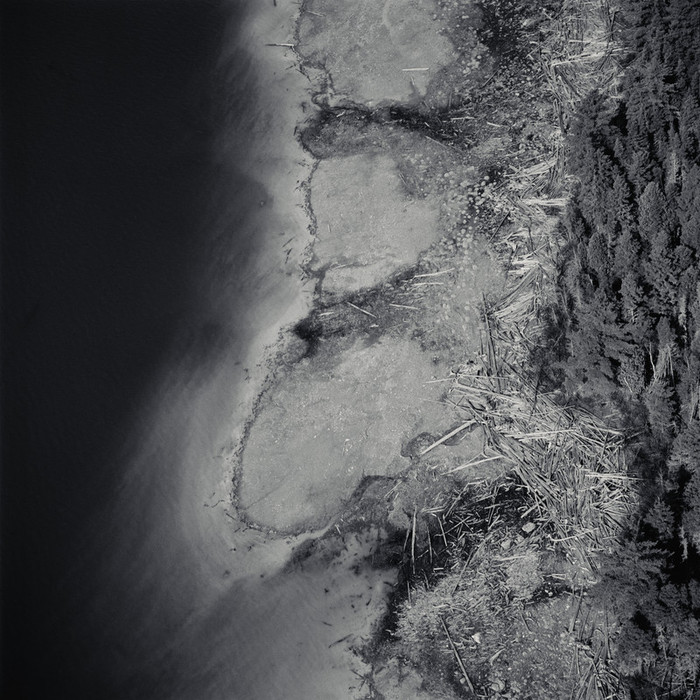The Forest
© David MaiselThe Forest depicts abandoned log flows from clear-cut zones in an area of northern Maine’s rivers and lakes. The forms of the tree trunks, set against the inky blackness of the water, serve to abstract the images. The trees have been uprooted from the earth by a machine called a “whole-tree harvester.” Some of the scarred, deforested images of clear-cutting seem to recall Matthew Brady photographs of Civil War battlefields. The photographs in The Forest thus became a series of elegies for landscapes that have incontrovertibly vanished.
The Forest as an archetype throughout human history has been full of enigmas and contradictions. The ancient grove appears as both sacred and profane. The forest is the site of shelter for the beginning of human civilization, and it is also encroached upon, exploited, and devastated as part of civilization’s expansion and progress.
The Forest shows the undoing of the natural world by human intervention in the landscape; clear-cutting and whole-tree harvesting are generally viewed as being incompatible with sustainable ecosystem management. The images of environmentally damaged sites, where the natural order has been eradicated, are both spectacular and horrifying. This work explores zones that have been kept hidden, and that are charged by both their profane beauty and their ethically questionable nature.
Making these pictures from the air in 1986—in a sense, mapping the land through cartographic means— offered a way for me to witness the otherwise invisible and unimaginable. Working from the air, time and space become strung together. The camera never occupies a static position, and thus no image can be repeated. The experience is that of a constant stream of possible framings that is not unlike the stream of consciousness itself. Motion gets dissected and reanimated.
In “Tattered Fragments of the Map,” an essay accompanying a 2009 exhibit of the same name, the curator Adam Katz writes: “If cartographic ‘facts’ are inevitably imbued with an assertion of power and a specific cultural and political perspective, we have reached a turning point at which their semiotic tools can now be re-contextualized or detourned. Rather than digging below the border, we may burrow below the surface of the map, crawl within its folds, and find out what lies beneath its structure.”
Several years ago I gave a presentation of my work to the geography department at the University of California at Berkeley, which triggered a heated discussion among the professors and graduate students as to what a map’s capacities really were, what powers and efficacy a map could actually hold. Is a map a way of knowing, or a way of describing? A way of staking a claim to a territory, or a way of seeing? A method by which to make sense of the mind's workings? A way of attempting representation? The aerial view is at once cartographic and subjective, hyper-rational and chaotic.
In my images of these clear-cutting sites, these zones of utter hopelessness and despair, I felt that I was depicting landscapes that we have created collectively. They are emblematic reflections of who and what we are as a society—self-portraits of a sort. As Katz writes, “like the photographic image, the map does not reproduce an unconscious closed upon itself. It constructs the unconscious, by coding power, politics, and aesthetics.”
With the aerial view, I began to consider the geographic as a paradigm for articulating environmental concerns. Aerial photography became a method that conjoins the realms of architecture, urban planning, ecological systems, and cultural and regional issues. The emergence of the geographic takes photography beyond mapping, and beyond the distancing and neutrality of the New Topographics. Photography joins the domains of design, engineering, and architecture in seeking a transformative impact on the shaping and articulation of contemporary realities.
click to view complete set in the archive

